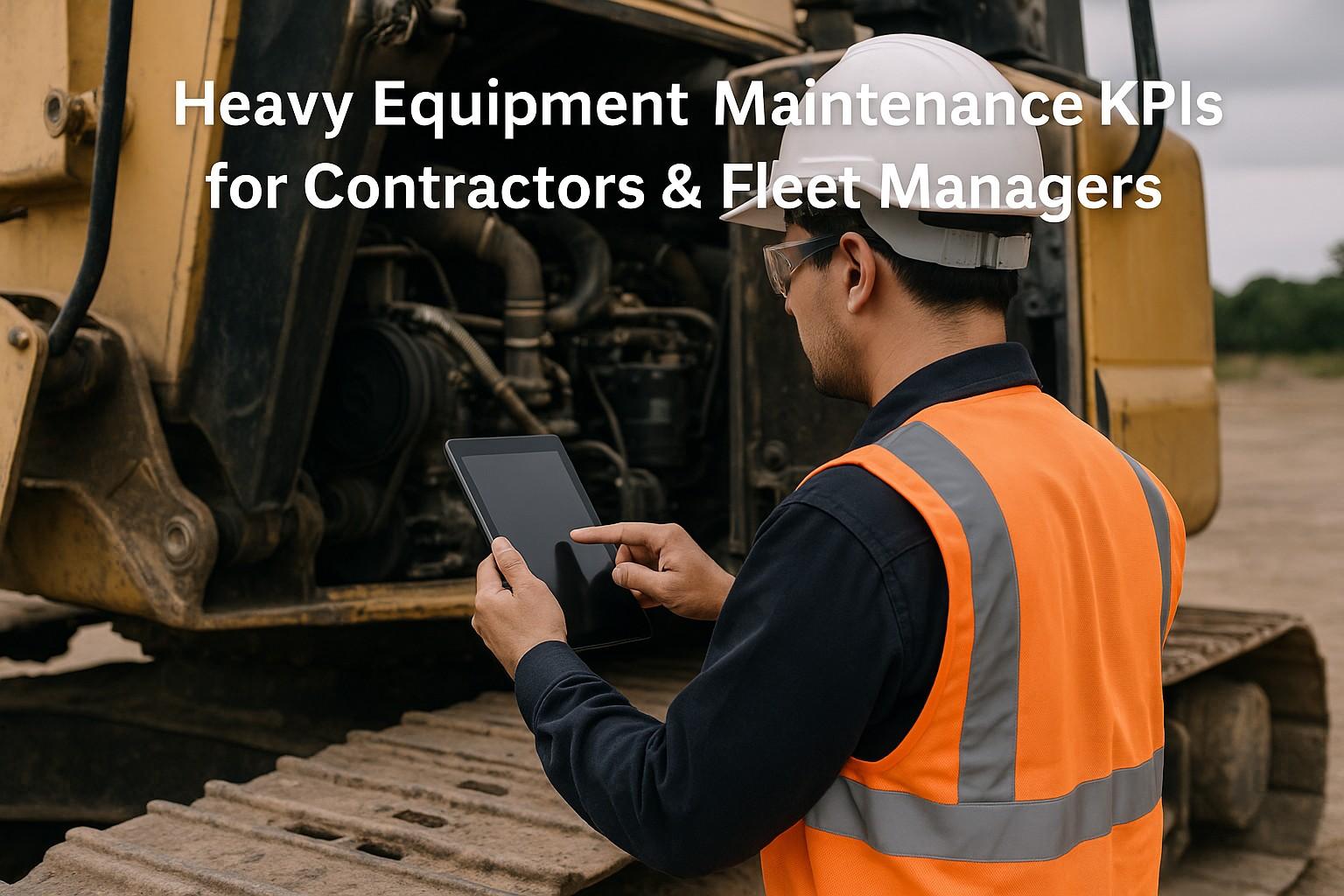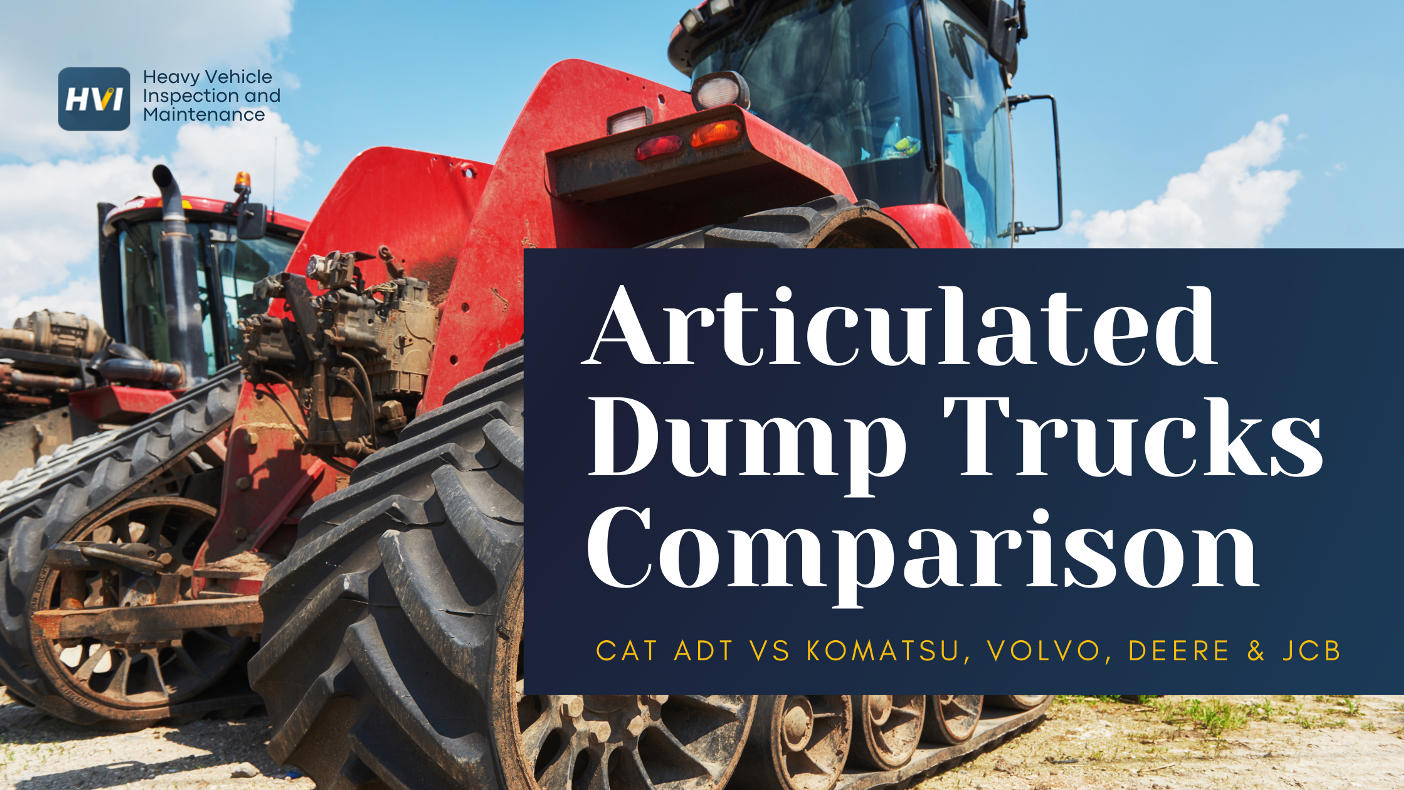Mid-size excavators represent the backbone of American construction, with contractors investing an average of $185,000-$420,000 per machine while expecting 8-12 years of reliable performance. The wrong excavator choice costs operators $35,000-$65,000 annually through reduced productivity, excessive fuel consumption, and premature component failures that cascade into project delays and revenue losses. Protecting this investment requires comprehensive maintenance tracking solutions that ensure optimal equipment performance.
This comprehensive guide compares leading mid-size excavator models across critical performance metrics including digging force, reach specifications, fuel efficiency, and total ownership costs. More importantly, it transforms excavator selection from guesswork into data-driven decision-making that maximizes productivity, minimizes operating expenses, and ensures specification matching for diverse applications ranging from utility work to heavy earthmoving projects.
Mid-Size Excavator Performance Impact
Ready to Optimize Your Heavy Equipment Fleet?
Discover proven inspection and maintenance protocols that maximize equipment performance and ROI.
Understanding Mid-Size Excavator Classifications
Mid-size excavators occupy the 20,000-50,000 lb operating weight class, bridging the gap between compact machines and large production excavators. This versatile category delivers sufficient power for substantial earthmoving while maintaining transportability on standard trailers without overweight permits, making them ideal for contractors balancing capability with mobility requirements.
The category subdivides into three distinct segments: compact mid-size (20,000-30,000 lbs), standard mid-size (30,000-40,000 lbs), and heavy mid-size (40,000-50,000 lbs). Each segment serves specific applications, with bucket capacity ranging from 0.5 to 1.5 cubic yards and maximum digging depths spanning 15 to 24 feet depending on model specifications.
Top Mid-Size Excavator Models: Comprehensive Comparison
Leading manufacturers compete intensely in the mid-size excavator segment, with each brand offering distinct advantages in performance, reliability, and operating economics. Understanding model-specific strengths enables optimal selection based on application priorities, brand ecosystem integration, and long-term support requirements.
Real-world data from 5,000+ mid-size excavators reveals significant performance variations between models across identical applications. Independent testing demonstrates that specification-matched machines deliver 35-50% better productivity than improperly sized alternatives, with fuel efficiency differences reaching 25-40% based on engine technology and hydraulic system optimization. Fleet operators managing multiple excavators can implement digital inspection systems to track performance metrics and optimize equipment utilization.
- ✓ 27,560 lbs bucket breakout force with 1.06 yard bucket capacity for versatile excavation
- ✓ 21'4" maximum dig depth and 31'2" reach enabling deep utility and foundation work
- ✓ Cat C4.4 ACERT engine delivering 162 HP with 18% better fuel efficiency than previous generation
- ✓ Advanced hydraulics with Smart mode reducing fuel consumption 15% without productivity loss
- ✓ Industry-leading parts availability and 92% dealer network coverage nationwide
- ✓ Resale value maintains 52-58% of original price after 5 years, highest in class
- ✓ 38,900 lbs bucket force with 1.5 yard capacity delivering maximum production capability
- ✓ 22'11" dig depth and 33'4" reach providing superior range for deep excavations
- ✓ SAA6D107E-3 engine producing 166 HP with 8% lower fuel consumption than competitive models
- ✓ Closed-center hydraulics enabling simultaneous multi-function operation without power loss
- ✓ KOMTRAX telematics providing real-time machine monitoring and predictive maintenance alerts
- ✓ 5-year/10,000-hour powertrain warranty demonstrating exceptional reliability confidence
- ✓ 42,370 lbs breakout force with 1.57 yard bucket handling heavy production demands
- ✓ 23'7" maximum depth and 34'1" reach providing industry-leading working envelope
- ✓ 173 HP Final Tier 4 engine delivering 12% better fuel economy through advanced combustion
- ✓ SmartGrade ready for integrated grade control reducing surveying costs 60-75%
- ✓ 500-hour service intervals reducing maintenance downtime 35% compared to 250-hour cycles
- ✓ JDLink telematics with geofencing and productivity analytics optimizing fleet utilization
Performance Specifications: Critical Decision Factors
Beyond brand reputation, specific performance metrics determine excavator productivity, efficiency, and suitability for intended applications. Understanding how specifications translate into real-world performance enables informed selection based on quantifiable capabilities rather than subjective preferences or brand loyalty alone.
Digging force, reach, cycle times, and hydraulic flow rates directly impact productivity while engine efficiency, maintenance intervals, and component durability determine operating costs. Contractors who prioritize specification matching over brand preference typically achieve 25-35% better ROI through optimized equipment utilization and reduced unnecessary capability costs.
Operating Cost Analysis: True Ownership Economics
While purchase price commands immediate attention, total ownership costs spanning 8-12 years determine actual profitability. A $35,000 price difference becomes insignificant when operational costs reach $450,000-$850,000 over typical ownership periods, making efficiency optimization critical for long-term financial performance. Smart contractors leverage maintenance analytics platforms to track total cost of ownership and identify optimization opportunities across their equipment fleet.
Fuel consumption dominates operating expenses at 35-45% of hourly costs, followed by maintenance (25-30%), operator wages (20-25%), and depreciation (15-20%). Selecting fuel-efficient models with extended service intervals generates 15-25% lower operating costs despite potentially higher acquisition prices, demonstrating how efficiency investments deliver superior returns.
- ✓ Fuel: $18,000-$28,000 annually (6-9 gal/hr @ $3.50/gal) - efficiency reduces costs 25-40%
- ✓ Maintenance: $12,000-$18,000 for parts, fluids, filters - extended intervals save $3,000-5,000
- ✓ Repairs: $8,000-$15,000 for wear components, hydraulics - reliability reduces unplanned costs 40%
- ✓ Insurance: $4,500-$7,500 depending on coverage, value, and utilization rates
- ✓ Depreciation: $22,000-$35,000 annually - premium brands retain 8-12% higher resale value
- ✓ Total: $64,500-$103,500 annually ($65-104/hour) with efficiency models 15-20% lower
Fuel Efficiency: Reducing Your Largest Operating Expense
Fuel efficiency variations of 25-40% between mid-size excavator models translate directly into annual savings of $5,000-$12,000 per machine. With fuel representing 35-45% of operating costs, efficiency optimization delivers measurable ROI while reducing environmental impact and supporting sustainability initiatives increasingly required for public and private contracts.
Modern engines incorporating high-pressure common rail injection, variable geometry turbos, and intelligent power modes achieve 15-25% better fuel economy than previous generations. However, significant variations persist between manufacturers, with some models consuming 8-9 gallons per hour while others require only 6-7 gallons for equivalent productivity levels.
Maintenance Requirements: Minimizing Downtime and Expense
Maintenance intervals ranging from 250 to 500 hours significantly impact operational efficiency and costs. Extended service intervals reduce maintenance downtime by 30-40% while cutting annual maintenance expenses $3,000-$5,000 through fewer service events, though requiring higher-quality fluids and filters that justify investment through total cost reduction.
Component accessibility dramatically affects service times, with well-designed machines enabling routine maintenance in 45-60 minutes versus 90-120 minutes for poorly designed layouts. This seemingly minor difference accumulates to 50-80 hours annually, representing $4,000-$7,000 in reduced labor costs and improved equipment availability over a typical ownership period.
Technology Integration: Productivity Enhancement Systems
Advanced technology options including grade control, telematics, and automated functions increasingly differentiate mid-size excavators beyond basic specifications. While adding $15,000-$45,000 to acquisition costs, these systems deliver measurable productivity improvements, reduce material waste, and enable fleet optimization that generates 15-30% efficiency gains justifying premium investments.
Grade control systems eliminate traditional surveying requirements, reducing surveying costs 60-75% while improving accuracy and productivity 25-35% through real-time guidance. Telematics enable predictive maintenance, theft recovery, and utilization tracking that optimize fleet deployment and prevent costly breakdowns through early intervention on developing issues.
Dealer Support and Parts Availability
Dealer network quality directly impacts equipment uptime, with response time and parts availability often mattering more than initial purchase price. Premium brands with comprehensive dealer coverage enable 4-8 hour emergency response versus 24-48 hours for limited networks, preventing $2,500-$6,000 daily revenue losses from extended downtime on critical projects.
Parts availability variations create 40-60% differences in repair times, with leading manufacturers maintaining 95%+ fill rates on common components while secondary brands struggle with 70-80% availability. This difference compounds over ownership, with well-supported machines averaging 92-96% uptime versus 85-90% for poorly supported alternatives.
Resale Value Considerations
Resale value retention ranging from 45% to 58% after five years creates $15,000-$35,000 differences in ultimate ownership costs. Premium brands command higher prices through proven reliability, widespread parts support, and strong market demand, while secondary brands depreciate faster despite potentially competitive initial pricing.
Maintenance documentation significantly impacts resale value, with well-documented machines commanding 8-15% premiums over identical units lacking service records. Digital maintenance tracking through telematics systems provides verifiable histories that maximize resale value while demonstrating care levels that attract premium buyers.
Environmental Compliance and Sustainability
Environmental compliance increasingly influences excavator selection as emissions regulations tighten and sustainability reporting becomes standard practice. Tier 4 Final engines reduce particulate matter by 90% while NOx emissions drop 45-50% compared to older machines, though requiring $8,000-$15,000 more in initial investment and DEF fluid systems adding $800-$1,200 annual operating costs. Companies committed to environmental stewardship can track emissions compliance and sustainability metrics through modern fleet management platforms.
Fuel efficiency improvements directly translate into carbon emission reductions, with efficient models producing 25-35% fewer greenhouse gases per cubic yard moved. This environmental performance increasingly influences contract awards, with many public projects requiring emissions reporting and favoring contractors demonstrating environmental responsibility through modern, efficient equipment fleets.
Financing and Acquisition Strategies
Financing options significantly impact equipment acquisition economics, with purchase, lease, and rental strategies each offering distinct advantages based on utilization rates, project types, and tax situations. Understanding total cost implications across financing methods enables optimized acquisition decisions that minimize capital requirements while maximizing operational flexibility.
Purchase financing through manufacturer programs typically offers 3.9-6.5% rates for 60-month terms, while lease options provide lower monthly payments with trade-up flexibility every 3-4 years. Rental becomes cost-effective below 500 annual hours, though sacrificing long-term equity building that ownership provides through depreciation deductions and eventual residual value.
Making the Right Mid-Size Excavator Choice
Selecting the optimal mid-size excavator requires balancing numerous factors including specifications, operating costs, dealer support, and financing options. While brand reputation matters, matching machine capabilities to specific applications delivers greater value than blind brand loyalty, with properly specified equipment generating 35-50% better productivity and 15-25% lower operating costs.
The mid-size excavator represents a significant investment demanding careful analysis beyond initial purchase price. Contractors who prioritize total ownership costs, efficiency optimization, and specification matching consistently achieve superior returns while minimizing operational headaches through reliable, well-supported equipment that maximizes uptime and productivity across diverse applications.
As construction technology continues advancing, integrating grade control, telematics, and automation becomes increasingly valuable. Whether selecting Caterpillar's industry-standard 320, Komatsu's production-focused PC210LC, or John Deere's capability-maximizing 245G, prioritizing specification matching and total ownership economics ensures optimal equipment investment that supports profitable, efficient operations throughout the ownership lifecycle.
Optimize Your Equipment Fleet with Professional Inspection Solutions
Implement comprehensive maintenance and inspection strategies that ensure maximum equipment performance and ROI.




